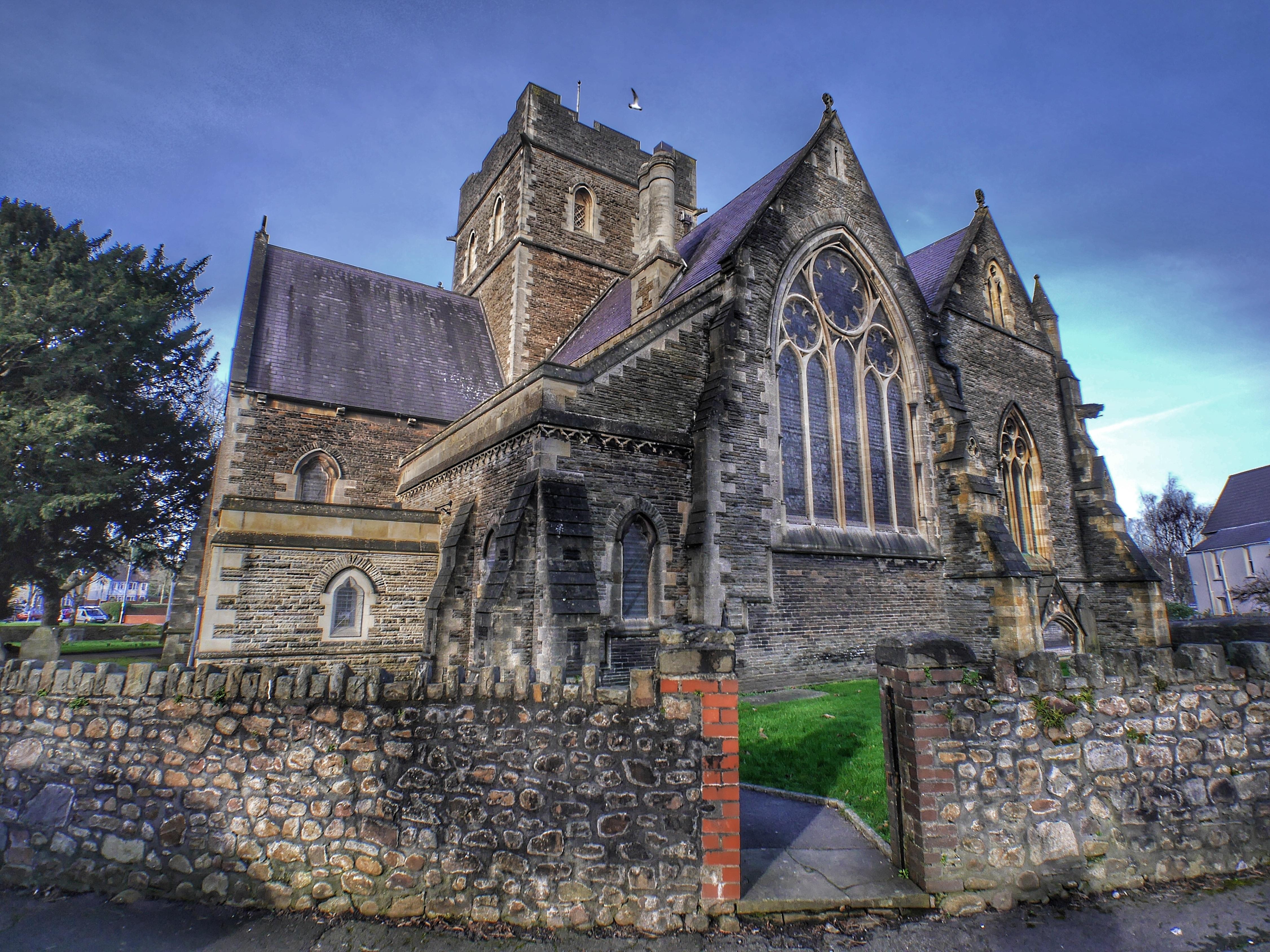St Edward King & Confessor
Roath, City of Cardiff
The current building was designed as a War Memorial Church by Mr E Willmott, and built in two stages: the chancel and vestry in 1921, and the nave in 1968.

There was a chapel here ‘the Chapel of Raht’ soon after 1100, founded by the Norman Lord Robert Fitzhamon, as a Chapel of Ease to his priory church of St Mary in Cardiff.
Roath , City of Cardiff
A little whitewashed building, thick walled and low, served the needs of this ancient hamlet, inhabited since Roman times, and now, for the Normans, the home farm for the castle, its pastures supplying meat, fish, butter and cheese.
St Mary’s and its chapels were given by Fitzhamon to his monastic foundation of Tewkesbury Abbey, which provided clergy, wine and wax to the chapel of Roath until the Reformation, and in return received its tithes. The ghost of a long dead Benedictine chaplain is said to haunt the church to this day!
In 1766, John Stuart, son of former Prime Minister the Earl of Bute, married Charlotte Jane Windsor, the heiress to the Welsh lands of the Herbert family. Through this marriage he acquired Cardiff Castle and vast tracts of land throughout Glamorgan. In 1792, he bought a parcel of land called the Friars Estate, which included the living of the Parish of Roath, and when his wife Charlotte died in 1800, he built a family burial chapel or mausoleum here, adjoining the chancel of the church, and with space for 48 coffins. This was intended to be the resting place of his family for generations to come.
In 1868, the old church was demolished and the third Marquess, now aged 21 and a Roman Catholic, brought in local architect John Prichard, restorer of Llandaff Cathedral, to build a state of the art Gothic church. The new church opened, to great acclaim, in 1870, though without Prichard’s planned tower and spire. Ten years later, the Marquess rebuilt the Mausoleum, incorporating it into the body of the church. Because of the family’s Catholicism, no further burials took place.
From outside the church looks rather plain, its dark grey Pennant sandstone topped by a stumpy tower, raised as a War Memorial in 1926. The surrounding churchyard, though full to capacity, has lost most of its gravestones, in a 1969 attempt to ‘tidy it up’! But the churchyard wall survives, parts of it dating from medieval times, much older than the building it surrounds.
A capacious south porch leads into the nave, ‘a glorious polychromatic interior’ said John Betjeman, in the Victorian fashion of many colours within the brick and stonework. The massive crossing has four different types of stone, including much pink Penarth alabaster, also used for the pulpit and chancel screen.
The chancel, though with modern choir stalls, shows much of Prichard’s work, in the south arcade, sedilia and mysterious carved heads. A great east window from 1952, the original stained glass was destroyed by bomb blast damage in WW2, depicts the Ascension in white and gold, flanked by the patron saints of the daughter churches of that time. Below the window is the carved and gilded Reredos, by the famous Ninian Comper, showing the Risen Christ and his Apostles. To the north, arches with lavishly carved capitals lead into the church’s unique feature, the Bute Mausoleum.
Rebuilt in the 1880’s, this chapel is a deluxe version of the style of the church, with profuse foliage carving, a brick vault and a beautiful mosaic of Christ in Majesty high on the west wall. Beneath, lie nine members of the Bute family, including the first Marquess and his two wives, buried in triple coffins, pitch-sealed, within massive red Peterhead polished granite tombs, their style similar to that of the tombs of the Tzars in St Petersburg. This unique Victorian funerary chapel is the only Bute burial site in Wales.
Roath, City of Cardiff
The current building was designed as a War Memorial Church by Mr E Willmott, and built in two stages: the chancel and vestry in 1921, and the nave in 1968.
Cardiff, City of Cardiff
The tale of St Andrew's church began in the last decade of the 19th century when Cardiff was a town growing around the docks which were built by the Marquises of Bute.
Roath, City of Cardiff
Urban Crofters is a renovated Victorian church a few miles from the centre of Cardiff hosting a midweek coffee house and co-working space.